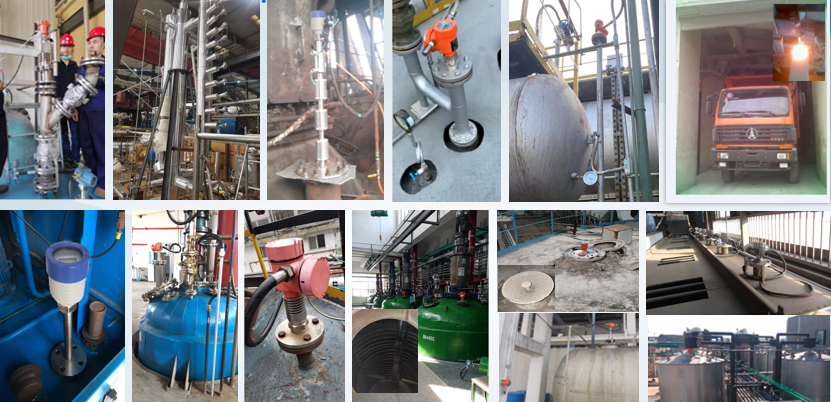In modern industrial and environmental monitoring scenarios, radar level gauges have emerged as indispensable devices for accurately measuring liquid levels. Their functionality is underpinned by several key aspects represented by the following hot terms.
Working Principle and Key Components Radar level Meter operate based on the principle of transmitting electromagnetic waves. The emitted waves travel towards the liquid surface, and the echo is received after reflection. The time taken for the wave to travel from emission to reception is measured. Given the constant speed of light, the distance from the gauge to the liquid level can be calculated using the formula \(d = c\times t/2\), where \(d\) is the distance, \(c\) is the speed of light, and \(t\) is the travel time. This basic principle enables the determination of the liquid level height within containers.
The beam angle of the radar wave is crucial. A smaller beam angle allows for more focused wave transmission, reducing the chance of interference from the tank walls or other objects in the vicinity. This is especially important in tanks with complex internal structures or in applications where high - precision measurements are required.
Performance - related Aspects Range resolution determines the ability of the radar level gauge to distinguish between two closely spaced targets. A high - range resolution ensures that the gauge can accurately measure the liquid level even in situations where there are small fluctuations or irregularities on the liquid surface.
Accuracy is a fundamental requirement for radar level gauges. In industries such as oil and gas, chemical manufacturing, and food processing, precise liquid - level measurement is essential for production control, inventory management, and safety reasons. The accuracy of radar level gauges is influenced by factors like the dielectric constant of the liquid being measured. Different liquids have different dielectric constants, which affect how the radar waves interact with the liquid surface. For example, liquids with high dielectric constants reflect radar waves more strongly, generally resulting in more accurate measurements.
Repeatability is another important performance metric. It refers to the gauge's ability to provide consistent measurements when measuring the same liquid level under the same conditions. High repeatability ensures reliable data collection over time, which is crucial for continuous process monitoring and control.
Special Features and Types The blind zone is an area close to the radar level gauge where accurate measurements cannot be made. Manufacturers are constantly working to minimize the blind zone to expand the measurement range of the gauges.
Guided wave radar is a special type of radar level gauge. Instead of using a free - space radar wave, it uses a physical guide, such as a cable or a rod, to transmit the radar signal. This makes it suitable for applications where there are foams, vapors, or turbulent liquid surfaces that could interfere with the normal operation of a non - guided radar level gauge.
Advantages and Applications One of the most significant advantages of radar level gauges is non - contact measurement. This eliminates the need for physical contact with the liquid, reducing the risk of corrosion, contamination, and wear and tear. As a result, they can be used in a wide range of applications, from measuring the level of corrosive chemicals in industrial plants to monitoring the water level in reservoirs for environmental purposes.
In conclusion, radar level gauges, with their advanced features and reliable performance, play a vital role in various industries and environmental monitoring. As technology continues to evolve, we can expect further improvements in their accuracy, range, and functionality, making them even more valuable tools for liquid - level measurement.

Post time: Feb-10-2025

